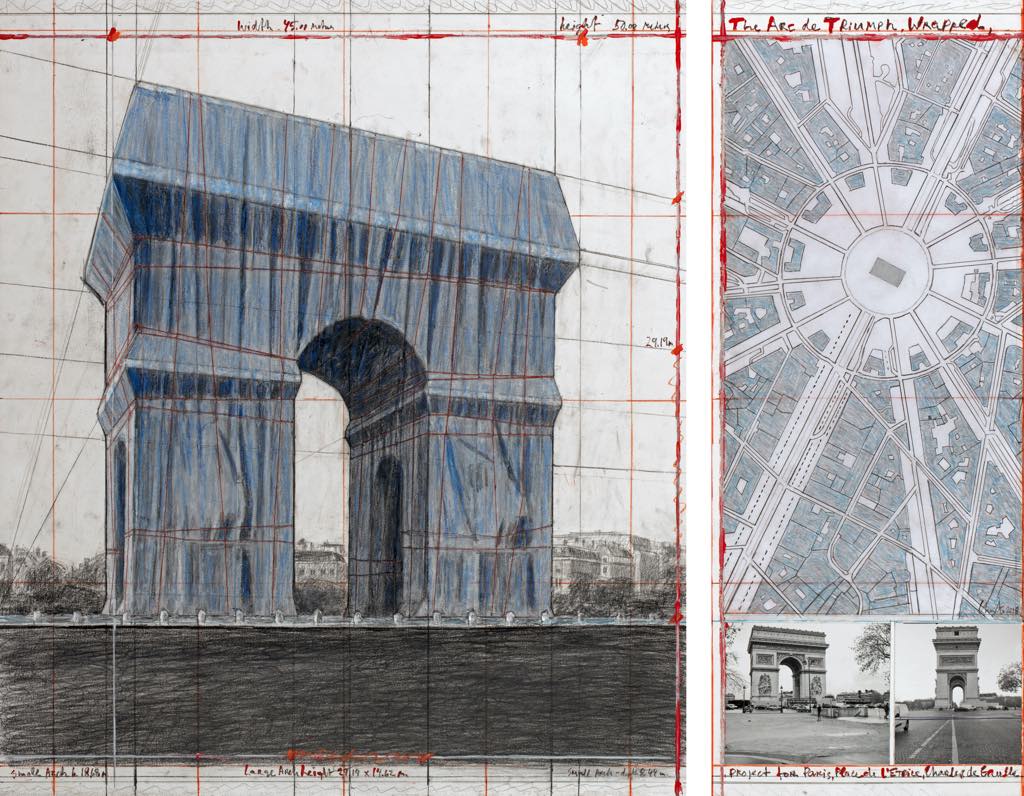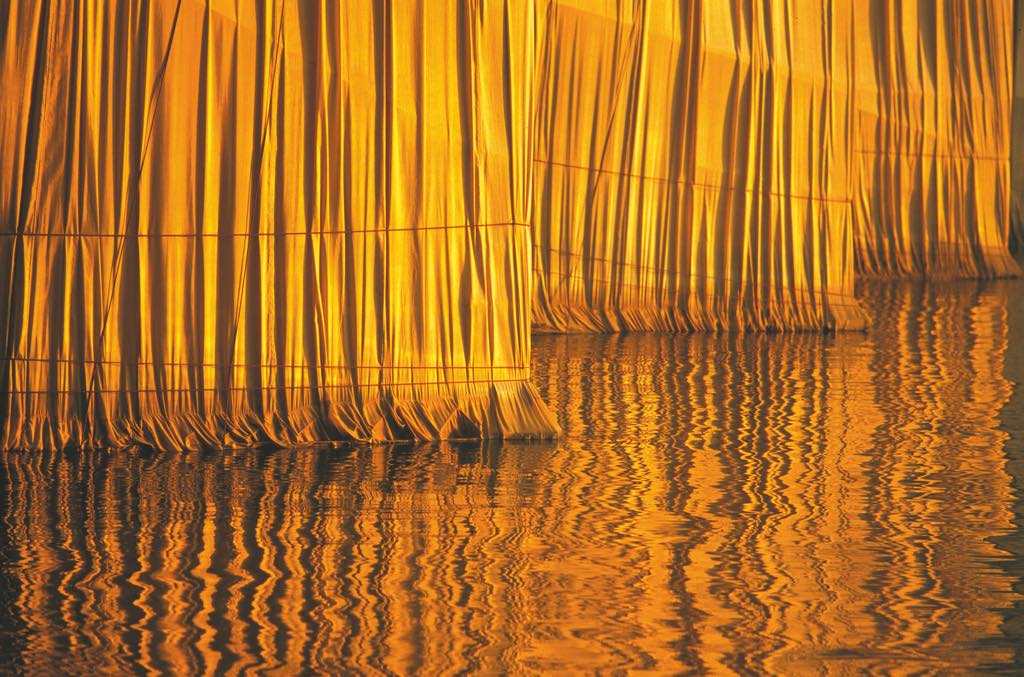The artist Christo’s obsession with wrapping did not begin with the spectacular environmental projects he and his wife Jeanne-Claude created around the world, among them Running Fence in California, The Gates in New York City’s Central Park, Surrounded Islands in Miami and Wrapped Reichstag in Berlin. As we learn from the Centre Pompidou’s exhibition “Christo et Jeanne-Claude: Paris!,” he started out small: wrapping up just about everything he could get his hands on, from a toy horse to a painting he had made of Jeanne-Claude to a small table in his apartment along all the miscellaneous objects sitting on top of it. It would seem that nothing around him was safe from being wrapped in fabric, trussed with rope or twine and coated with lacquer and/or paint and sand. But that was before he went large and set his sights on bridges, monuments and the great outdoors.
Christo and Jeanne-Claude, their art-team name (real names: Christo Vladimirov Javacheff and Jeanne-Claude Denat de Guillebon), also famously wrapped Paris’s Pont Neuf in 1985, and that stunning project is the main focus of this exhibition, which was originally timed to coincide with the planned wrapping of the Arc de Triomphe – now postponed to September 18-October 3, 2021 – which will go ahead even though the artist died at the end of May this year (Jeanne-Claude passed away in 2009).

The exhibition first takes a quick look at Christo’s early painted portraits, his small-scale wrapped sculptures and a series of covered shop windows. There is also a re-creation of a “temporary wall” of stacked oil barrels, which Christo and Jeanne-Claude built in Paris guerrilla-style without permission one night in 1961. This wall, made of those ugly symbols of the fuel of modern life, was meant by the artists as a comment on the construction of the Berlin Wall. It blocked off a small street in historic Saint Germain-des-Prés and was not appreciated by the Paris police, who quickly made them dismantle it.
The wrapping of the Pont Neuf, which was 10 years in the making, is documented in enormous detail, with sketches, technical drawings, photos, letters and artworks made by Christo to be sold to finance the project (as were all of the couple’s monumental projects; none of them used public funds). There is even a display of the pulleys, cables and other tools used to drape the bridge in its elegant, shimmering golden cloak, with photos of the whole complicated process, involving boats and divers and climbers.
Aside from the artworks, a major highlight of the show is the film Christo in Paris, by Albert and David Maysles, which gives us an up-close and personal view of Christo and Jean-Claude. We learn that he was a political refugee from Bulgaria living in Paris in the 1950s when he met a French general who liked the young artist’s work and offered him the use of a maid’s room he owned. Christo eventually met the general’s daughter, Jeanne Claude, and her mother the countess. It may not have been love at first sight, but it developed into long-lasting love and marriage.

The film also follows the grueling process of getting permission to wrap the bridge. We sit in on discussions of how win over politicians (the general was a great help with this) and in meetings with then-Paris mayor Jacques Chirac, who for his own political reasons was not quick to give permission, although he was quick to take credit once the project was a success.
We then see the bridge being wrapped and attend opening day, during which passersby are asked for their reactions. Most of them were not impressed and did not see the point, but then Parisians do not accept novelty easily, as we know from their initial negative reactions to the Eiffel Tower, Centre Pompidou and Louvre Pyramid, all of which are now beloved landmarks on the Parisian cityscape.

Although Christo and Jeanne-Claude are no longer with us, their work will live on through shows like this – a wonderful homage – and all the documentation they left behind of their ephemeral projects. And, Christo has given one last gift to the city of Paris that we can still look forward to: the wrapping of the Arc de Triomphe next year.
Favorite


![Climbers attach the fabric hoisted under one of the arches and adjust the tension of the straps sewn onto the fabric, making it hug the lines of the vault [September 16-22, 1985]. © Christo 1985 Photo © Wolfgang Volz](https://www.parisupdate.com/wp-content/uploads/2020/09/ParisUpdate-Christo-Centre-Pompidou-23.-The-Pont-Neuf-Wrapped-3-Paris-1975-1985.jpg)